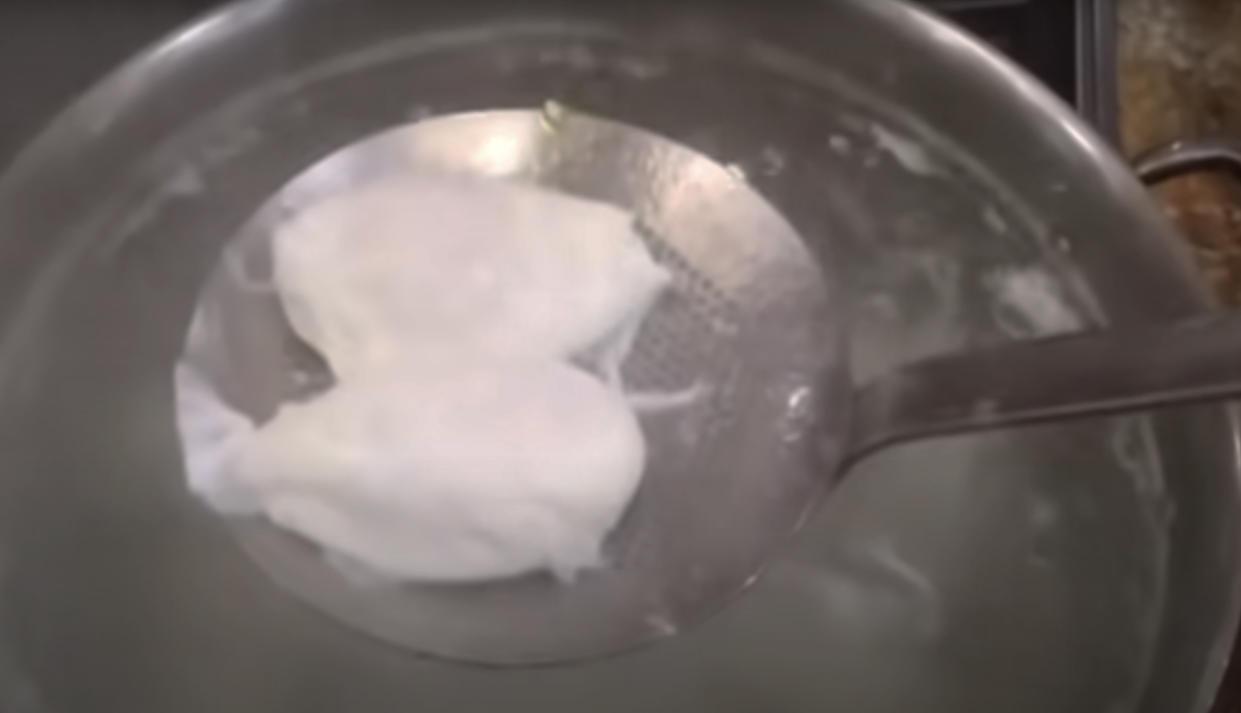How to poach 30 eggs — yes, 30 — all at once
"Very cool," "hilariously straight to the point" and "really interesting."
Those are just some of the 800 comments on one of chef and food writer J. Kenji López-Alt's how-to cooking videos. Titled "How to Poach 30 Eggs at Once," the video was first uploaded to YouTube in November, but two months later, the 15-second video continues to reach fans and intrigue home cooks. The Kitchn declared they were "completely mesmerized," and indeed, the video tends to raise more questions than it answers, so TODAY Food went straight to the source to find out why one would ever need to poach 30 eggs at a time.
López-Alt's video opens with a shot of 15 eggs in a sieve over a stainless steel bowl. He cracks one more egg into the mix for good measure before lifting all the eggs up and giving them three shakes, letting some of the egg whites strain into the pot.
Six seconds in, the camera cuts to López-Alt gently pouring the now-separated egg yolks one by one from the sieve and into a boiling pot of hot water. The yolks quickly start to turn white as the remaining egg whites get cooked.
In the final scene, López-Alt uses a slotted spoon to fish out a couple of the poached eggs which have turned perfectly round as the egg whites fully envelope each yolk.

Though the video clip is short, López-Alt added ample notes in the video description.
"Next time you’ve got to make eggs Benedict for thirty, here’s how," he begins.
You may be asking, "Why would it be necessary to cook 30 eggs at a time?" Well, in an email to TODAY, López-Alt explained, "Realistically this is most useful in a restaurant or teaching setting. At home I may poach a dozen eggs at a time for a brunch party (during non-COVID times). You can poach the eggs, then transfer to an ice bath and store in the fridge in water for a few days. Reheat in a pot of hot (not boiling) water for just a minute or so to warm through, then drain and serve."
It sure sounds like a convenient, make-ahead method, but it's important to note that there is a specific strategy to the unusual preparation. López-Alt recommends that the water be brought to "a hard boil" before reducing the heat "until just barely simmering." He further explains in the video description that straining some of the egg whites before cooking them allows the poached eggs to "come out more compact and more importantly the water doesn’t get crazy cloudy from the runaway whites."
As for the pot, "the only thing in the water is a bit of salt, for flavor. No vinegar. Once the eggs are in I give it lazy stirs with a wooden spoon in order to keep the eggs from lying flat on the bottom. Don’t poke the eggs directly with the spoon. Just make water currents to move them around. They are done when the whites are set and the yolks are runny, about 4 minutes."
López-Alt told TODAY there's no particular reason why he specified poaching 30 eggs in one go. "I just said 30. I've done it with over 50 for classes in the past, but there's no magic number," he said. He also suggested this cooking method can be scaled down for a smaller bath of 10 or a dozen eggs.
Over the years, TODAY has shared several other techniques for poaching eggs, including the method López-Alt uses. There's the water vortex or plastic wrap method, pan method and even a muffin tin method.
López-Alt doesn't mind the water vortex method, writing that it could lead to a "slightly better shape" but wasn't a fan of the other techniques. "The plastic wrap method is not really poaching, as the eggs don't come in contact with water, and they end up looking like … they were wrapped in plastic. It's basically soft boiling with plastic instead of a shell," he said.
"The muffin pan method I also don't like because a.) I don't want to heat up an oven to poach some eggs and b.) they come out with a funny shape."
When it comes to poached eggs, López-Alt added that he enjoys them "on top of a salad or with sautéed mushrooms.
"I eat them maybe once a month or so. Usually we just do fried or scrambled as it's faster and easier especially with a toddler in the house."
